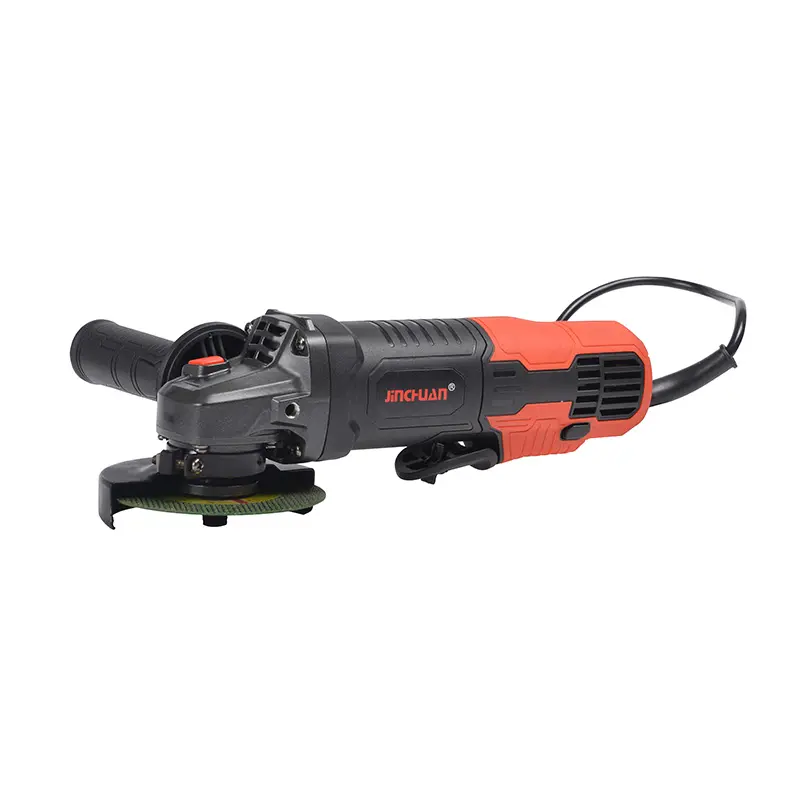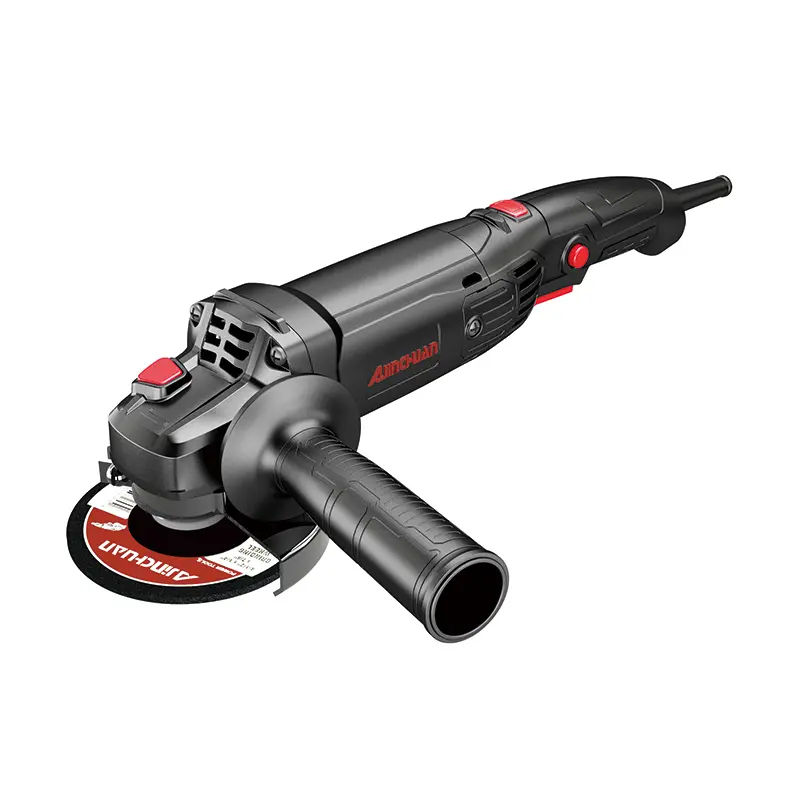In the field of power tools, performance parameters have long held a dominant position – torque, rotational speed and power are regarded as the core standards for measuring value. However, a silent yet crucial revolution is taking place: the interaction interface between tools and the human body is becoming a new benchmark for defining professional-level tools. Among them, the strategic application of rubber-coated materials has evolved from an additional function to an indispensable core of ergonomics. It is not merely “a layer of rubber”, but an intelligent bridge connecting cold machines with warm palms, an engineering solution that enhances work efficiency and ensures user safety and health.
This article will delve into how high-quality rubber-coated materials, especially soft anti-slip rubber, through their unique physical and chemical properties, endow modern power tools with an outstanding user experience in three dimensions: grip comfort, anti-slip stability, and vibration management.
First, the Science of Touch: How does Soft Anti-slip Rubber Achieve “Oneness of Man and Machine”
The primary principle of ergonomics is adaptation, that is, tools should actively adapt to the physiological structure of the human body rather than forcing users to adapt to the tools. The human hand is a precise organ composed of bones, muscles, tendons and nerves. Operating rigid and smooth tool surfaces for a long time can lead to local pressure concentration, causing discomfort and fatigue.
1. Pressure distribution and comfortable grip:
The core value of high-quality soft anti-slip rubber lies in its elasticity and deformability. When the user holds the tool, the rubber coating undergoes slight deformation according to the anatomical contour of the hand, thereby distributing the holding pressure from a few limited “hard points” to a larger contact area of the entire palm and fingers. This uniform pressure distribution can significantly reduce the pressure in key areas such as the metacarpophalangeal joint and the web of the thumb. According to ergonomic research, an optimized grip can reduce local pressure by up to 30% or more. This is crucial for tools that require prolonged and repetitive operations, such as screwdrivers and electric drills, as it can effectively delay the onset of muscle fatigue.
2. Coefficient of friction and anti-slip safety
In a real working environment, oil stains, sweat and dust are inevitable. Under such conditions, the coefficient of friction of smooth plastic or metal grips drops sharply, forcing the user to apply greater grip force to maintain control. This directly leads to what is called “over-grasping syndrome”, accelerating the strain of forearm muscles.
Soft anti-slip rubber, with its micro-rough surface and high friction coefficient material properties, can provide stable grip even in damp or slightly oily conditions. This means that users can safely operate the tools with a more natural and relaxed grip, not only improving operational accuracy but also fundamentally reducing the risk of product damage or personal injury caused by tool slippage.
Second, vibration isolation barrier: Protecting users’ health from the source
Vibration is the “invisible killer” of power tools, especially shock and rotary ones. Long-term exposure to hand-transmitted vibrations may lead to irreversible occupational diseases, such as “white finger disease” (arm vibration syndrome), with symptoms including whitening, numbness, tingling and loss of flexibility in the fingers.
1. Physical blocking of vibration transmission
Soft anti-slip rubbers, especially those carefully formulated thermoplastic elastomers (TPE) or thermoplastic polyurethane (TPU), possess excellent damping properties. When the high-frequency vibrations generated by the motor and transmission mechanism inside the tool attempt to be transmitted to the user’s hand through the handle, the rubber coating layer, as an efficient vibration attenuation medium, can absorb and dissipate a large amount of vibration energy. The molecular chains within its material generate internal friction when subjected to vibration, converting mechanical energy into negligible thermal energy and thus blocking the transmission path of vibration.
2. Coordination with the overall vibration reduction design:
It should be emphasized that the most effective vibration reduction strategy is a systematic project. The rubber-coated material is the “last mile” of this system, and it works in coordination with the active and passive vibration damping mechanisms inside the tool (such as suspension motors, vibration damping springs or rubber pads). The internal mechanism is responsible for handling most of the low-frequency and high-amplitude vibrations, while the rubber coating on the handle further filters out the remaining, especially the uncomfortable high-frequency vibrations. This multi-level defense system can keep the hand-transmitted vibration value (usually measured in ahv equivalent acceleration meters per second ²) within strict safety standards (such as the EU EN 60745 standard), providing long-term health protection for users.
Third, all-weather and all-condition adaptive design
Professional tools need to maintain reliability in various harsh environments. The choice of rubber coating material directly determines the performance and durability of the tool under extreme conditions.
1. Chemical stability and weather resistance
High-quality rubber coating materials have the ability to resist oil, grease and common chemical solvents. This means that in scenarios such as car repair and factory maintenance, even if it comes into contact with a small amount of oil stains, the rubber coating layer will not swell, deform or experience a sharp decline in physical properties. At the same time, it should have good resistance to ultraviolet rays and ozone to ensure that it will not crack, powderize or become brittle when exposed to sunlight for a long time at outdoor construction sites, thus guaranteeing the service life of the tools.
2. Wide temperature range performance and touch retention:
From the cold winter warehouse to the hot summer roof, tools need to withstand huge temperature changes. Poor-quality rubber will harden at low temperatures and lose its anti-slip and shock-absorbing functions. It will become sticky at high temperatures, stick to hands and easily accumulate dust. Engineering-grade soft rubber is specially formulated to maintain its physical properties and comfortable touch within a wide temperature range, such as -20°C to 60°C, ensuring a consistent handling experience for users in any season.
3. Fine design of form and texture
Apart from the material itself, the shape design of the rubber coating is equally crucial. Ergonomic dual-component rubber grips, usually fused:
Macroscopic form: It adopts a wavy or waist drum-shaped design that conforms to the natural grip posture of the hand, providing clear support and positioning for the palm.
Microscopic texture: Fine anti-slip particles or diamond-shaped patterns are designed on the surface to further increase the surface area and friction coefficient, achieving all-round anti-slip performance in “dry/wet hand” conditions.
Conclusion: Rubber-coated material – the new standard defining professional tools
In today’s power tool market, outstanding performance has become the benchmark, while an excellent experience is the true differentiating advantage. The in-depth investment and innovation in soft anti-slip rubber coating materials go far beyond enhancing the appearance and texture of the products. It reflects a profound concern for the work efficiency, operational safety and long-term occupational health of end users, whether they are professional artisans or seasoned DIY enthusiasts.
Choosing power tools equipped with high-quality rubber coating means choosing a more comfortable, safer and more sustainable way of working. It represents a fundamental shift in tool manufacturing from pure mechanical engineering to human-oriented engineering that deeply integrates materials science, biomechanics and user experience design. In the increasingly competitive global market, those products that deeply understand and are the first to apply these ergonomic essences will surely win the favor and long-term trust of more discerning users.
Post time: Oct-27-2025


